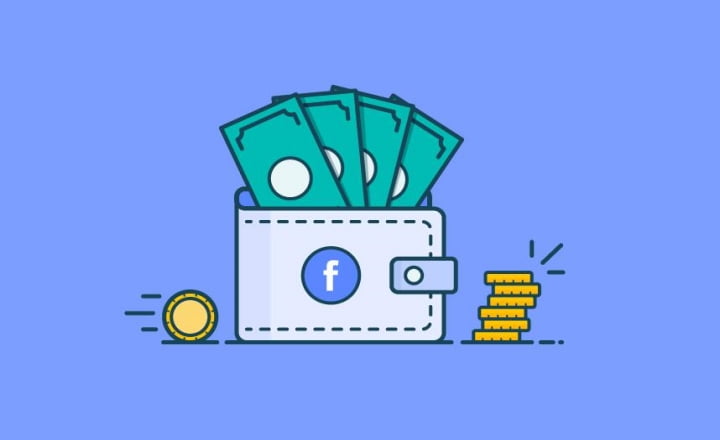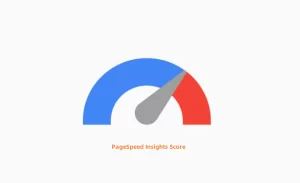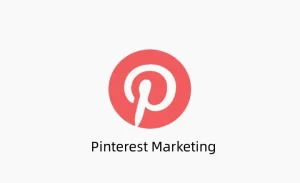Facebook continues to be a powerful platform for businesses to reach, engage, and convert customers. But how much does it cost to advertise on Facebook?
In this comprehensive guide, we’ll explore the average costs of Facebook ads, factors that influence pricing, and strategies to stretch your budget effectively.
Whether you’re a small business with a limited advertising budget or a large corporation looking to maximize your ROI, these insights will help you make informed decisions about your Facebook marketing campaigns.

Table of Contents
- Understanding the Cost of Facebook Ads
- Factors that Influence Facebook Advertising Costs
- Facebook Marketing Pricing Models
- Strategies to Lower Facebook Ad Costs
- Setting a Facebook Ad Budget
- The Value of Facebook Ads
- Tools and Resources for Managing Facebook Marketing Costs
- Conclusion
Understanding the Cost of Facebook Ads
Facebook ads are not a one-size-fits-all solution, and the cost can vary based on several factors. Let’s explore the average cost per click (CPC) for Facebook ads based on different reports and studies.
Average Cost per Click by Region
The cost per click for Facebook ads can also vary by region. According to Emplifi’s State of Social Media and CX report, here are the average costs per click for different regions:
- North America: $0.40 – $0.65
- Western Europe: $0.30 – $0.50
- East Asia: $0.18 – $0.20
- Southern Europe: $0.11 – $0.21
- Worldwide: $0.12 – $0.19
- South America: $0.05 – $0.10
- Central America: $0.05 – $0.10
- Southeast Asia: $0.05 – $0.10
Average Cost per Click by Month
According to Ad Espresso’s Facebook benchmarks report, the average cost per click for Facebook ads across all industries is $0.44. However, the cost per click can fluctuate throughout the year.
Here is a breakdown of the average cost per click by month:
- January: $0.30
- February: $0.33
- March: $0.42
- April: $0.46
- May: $0.44
- June: $0.47
- July: $0.46
- August: $0.47
- September: $0.50
Average Cost per Click by Industry
The industry you belong to can also impact the cost of Facebook ads. While the latest industry benchmarks available are from 2019, they provide insights into the average CPC across different sectors.
Here is a breakdown of the average CPC by industry:
- Beauty & Fitness: $1.85
- Business & Industrial: $2.48
- Finance: $3.89
- Food & Drink: $0.42
- Hobbies & Leisure: $0.68
- Home & Garden: $2.78
- Internet & Telecom: $3.07
- Jobs & Education: $2.11
- News: $1.11
- People & Society: $2.01
- Pets & Animals: $0.61
- Real Estate: $1.81
- Science: $1.33
Factors that Influence Facebook Advertising Costs

Several factors can influence the cost of Facebook ads. By understanding these factors, you can optimize your campaigns and make the most of your advertising budget.
Audience Size
Generally, targeting larger and broader audiences will cost less than targeting smaller, more specific audiences. Prospecting and upper-funnel campaigns tend to have lower costs compared to retargeting and lower-funnel campaigns due to audience size and competition.
Campaign Objectives
Different objectives have varying levels of competition and value. For example, brand awareness or engagement campaigns tend to cost less than conversion campaigns that drive purchases. Consider your goals and where your audience is in the marketing funnel when selecting a campaign objective.
Bidding Strategy
Facebook offers various bidding strategies, including lowest cost, highest value, cost cap, minimum return on ad spend (ROAS), and manual bidding. Each strategy has its advantages and disadvantages, so choose the one that aligns with your goals and budget.
Daily Budget
If your daily budget is lower, it may take longer for Facebook’s algorithm to optimize your ads, resulting in higher upfront costs.
As your ads gain engagement, Facebook will reward you with lower costs over time. Consider your budget and allocate it strategically to achieve the best results.
Click-through Rate
The click-through rate (CTR) of your ads can also affect their cost. If your CTR is low, especially in website traffic campaigns, Facebook may perceive a disconnect between your target audience and the messaging in your ads, leading to higher costs. Aim for a healthy CTR of around 2% to lower your CPC.
Seasonality
During the holiday season, competition increases as brands ramp up their budgets, leading to higher costs for all advertisers.
If your business is not directly related to the holiday season, you may need to strategize and adjust your presence or budget accordingly during this time.
Industry
The industry you operate in can significantly impact Facebook ad costs. Different industries have varying levels of competition, which affects pricing.
For example, the finance industry has higher average CPCs compared to the food and drink industry. Consider the average costs for your industry when planning your Facebook advertising budget.
Facebook Marketing Pricing Models
Facebook offers several pricing models for advertisers to choose from, depending on their campaign goals and objectives.
Let’s explore the most common pricing models used in Facebook marketing:
Cost per Mille (CPM)
Cost per Mille (CPM) is a pricing model where advertisers pay for every thousand impressions their ads receive. This model is ideal for campaigns focused on brand awareness, reach, or visibility. Advertisers set a maximum bid for every thousand impressions, and Facebook optimizes the ad delivery to maximize impressions within the specified budget.
Cost per Click (CPC)
Cost per Click (CPC) is a pricing model where advertisers pay for each click on their ads. This model is suitable for campaigns focused on driving traffic to a website, generating leads, or encouraging specific actions.
Advertisers set a maximum bid for each click, and Facebook optimizes the ad delivery to maximize clicks within the specified budget.
Cost per Like (CPL)
Cost per Like (CPL) is a pricing model where advertisers pay for each new page like or follower they gain through their ads. This model is ideal for campaigns focused on increasing social media engagement and building a loyal community.
Advertisers set a maximum bid for each new page, and Facebook optimizes the ad delivery to maximize likes within the specified budget.
Cost per Action (CPA)
Cost per Action (CPA) is a pricing model where advertisers pay for specific actions taken by users, such as making a purchase, signing up for a newsletter, or completing a form.
This model is suitable for campaigns focused on driving conversions and measuring return on investment (ROI). Advertisers set a maximum bid for each desired action, and Facebook optimizes the ad delivery to maximize actions within the specified budget.
Cost per Install (CPI)
Cost per Install (CPI) is a pricing model commonly used in mobile app advertising, where advertisers pay for each new app installation driven by their ads.
This model is suitable for campaigns focused on app downloads and user acquisition. Advertisers set a maximum bid for each new install, and Facebook optimizes the ad delivery to maximize installations within the specified budget.
Strategies to Lower Facebook Ad Costs
While Facebook ad costs can vary, there are several strategies you can implement to lower your expenses and stretch your budget effectively.
Here are some actionable tips:
1. Use the Automatic Placement Setting
Instead of manually selecting ad placements, use the automatic placements setting to allow Facebook’s algorithm to optimize your ads’ performance. By appearing on all placements, Facebook can better understand where to serve your ads, leading to lower costs and faster learning.
2. Create a Full-Funnel Strategy
To make the most of your budget, develop a full-funnel strategy that aligns with your marketing objectives. Start with upper-funnel campaigns to reach a broader audience at a lower cost, then gradually move toward conversion campaigns as you optimize for purchase-driving conversion events.
3. Broaden Your Audience
While targeted audiences are essential, consider broadening your audience to reach a larger pool of potential customers. This can help lower costs by reducing competition and expanding your reach. Experiment with broader targeting options while keeping your messaging relevant to attract a wider audience.
4. Use Bid Caps
By setting a maximum bid, you have more control over how your budget is spent. However, be cautious and ensure that your bid cap is not too low, as it may impact your ad’s reach and effectiveness.
5. Check Audience Overlap
Facebook’s audience overlap tool can help you identify potential overlaps between different ad sets. By excluding overlapping audiences, you can prevent bidding against yourself and wasting your budget. Use this tool to optimize your targeting and allocate your budget more efficiently.
6. Target Your Page Fans Separately
Separating your page fans from other audiences allows you to allocate more budget to the campaigns that target your most engaged and highest-converting audience.
By retargeting page visitors separately, you can personalize your messaging and drive better results with a focused budget.
7. Use the Pixel and the Facebook Conversions API
Utilize both the Facebook Pixel and the Facebook Conversions API to track your ad performance accurately. With these tools, you can gain insights into what’s working and what’s not, allocate budget effectively, and optimize your campaigns based on data-driven decisions.
8. Defining Campaign Goals
Start by clearly defining your campaign goals and objectives. Are you looking to drive website traffic, generate leads, increase conversions, or boost brand awareness?
Each campaign goal may have different cost implications, so it’s essential to align your budget with your objectives.
Setting a Facebook Ad Budget
Setting a Facebook ad budget requires careful planning and consideration of your campaign goals, target audience, and expected return on investment. Here are some key steps to help you set an effective Facebook ad budget.
Defining Campaign Goals
Start by clearly defining your campaign goals and objectives. Are you looking to drive website traffic, generate leads, increase conversions, or boost brand awareness? Each campaign goal may have different cost implications, so it’s essential to align your budget with your objectives.
Calculating Lifetime Value (LTV) and Customer Acquisition Cost (CAC)
By analyzing your historical data and customer behavior, you can estimate the potential revenue generated by each customer and allocate an appropriate budget to acquire new customers.
Allocating Budget Across Campaigns
If you’re running multiple campaigns simultaneously, it’s essential to allocate your budget effectively across each campaign. Consider the relative importance of each campaign and the expected return on investment. Some campaigns may require higher budgets to drive immediate results, while others may have a more long-term impact.
Testing and Iterating
Budget allocation should not be a one-time decision. It’s crucial to continuously test and iterate your campaigns to optimize performance and maximize your return on investment. Monitor key metrics such as click-through rates, conversion rates, and cost per result to identify areas for improvement and make data-driven decisions.
The Value of Facebook Ads
Despite the cost, Facebook ads offer significant value for businesses. Consider these advantages when evaluating the return on investment (ROI) of your Facebook marketing efforts:
Facebook’s Popularity and User Base
With over 2.8 billion users worldwide, Facebook remains the largest and most popular social media platform. Advertising on Facebook allows you to reach a vast audience and tap into a diverse user base that spans different demographics and interests.
Precise Targeting for Higher ROI
One of Facebook’s strengths is its precise targeting capabilities. You can reach highly specific audiences based on demographics, interests, and behaviors.
This level of targeting reduces wasted ad spend and increases the likelihood of reaching the right people at the right time, resulting in a higher return on investment.
Flexibility in Budgeting
Facebook offers flexible budgeting options, allowing you to set daily or lifetime budgets based on your advertising goals. This flexibility enables businesses of all sizes to advertise on Facebook, whether they have a small budget or significant resources.
Affordability Compared to Other Platforms
Facebook ads are generally cheaper than those on Instagram, LinkedIn, and Twitter. With lower average CPCs, businesses can achieve their marketing objectives while stretching their advertising budget further.
Tools and Resources for Managing Facebook Marketing Costs
Managing Facebook marketing costs can be challenging, but several tools and resources can help you streamline your campaigns and optimize your ad budget.
Facebook Ads Manager
Facebook Ads Manager is a comprehensive platform that allows you to create, manage, and optimize your Facebook ad campaigns. It provides detailed insights into your ad performance, audience demographics, and cost metrics.
Utilize the features available in Ads Manager to monitor your campaigns, make data-driven decisions, and optimize your ad budget.
Facebook Blueprint
Facebook Blueprint is an online learning platform that offers a wide range of courses and resources to help you master Facebook marketing.
Take advantage of the free courses and certifications available to learn about advanced targeting strategies, campaign optimization techniques, and best practices for maximizing your ad budget.
Third-Party Analytics and Optimization Tools
Several third-party tools and platforms specialize in Facebook ad analytics and optimization. These tools provide advanced reporting, audience segmentation, A/B testing, and bid management features.
Consider using tools such as AdEspresso, Smartly.io, or Hunch to gain deeper insights into your ad performance and automate optimization processes.
Conclusion
Understanding the cost of Facebook ads and implementing strategies to optimize your budget is crucial for successful Facebook marketing campaigns.
By considering the average costs, factors that influence pricing, and cost-saving techniques, you can make informed decisions and achieve better results with your Facebook advertising efforts.
Remember to continuously monitor and analyze your campaigns to optimize performance and maximize your return on investment. With the right approach, Facebook marketing can be a cost-effective and valuable tool for businesses of all sizes.
Posts that may interest you:


